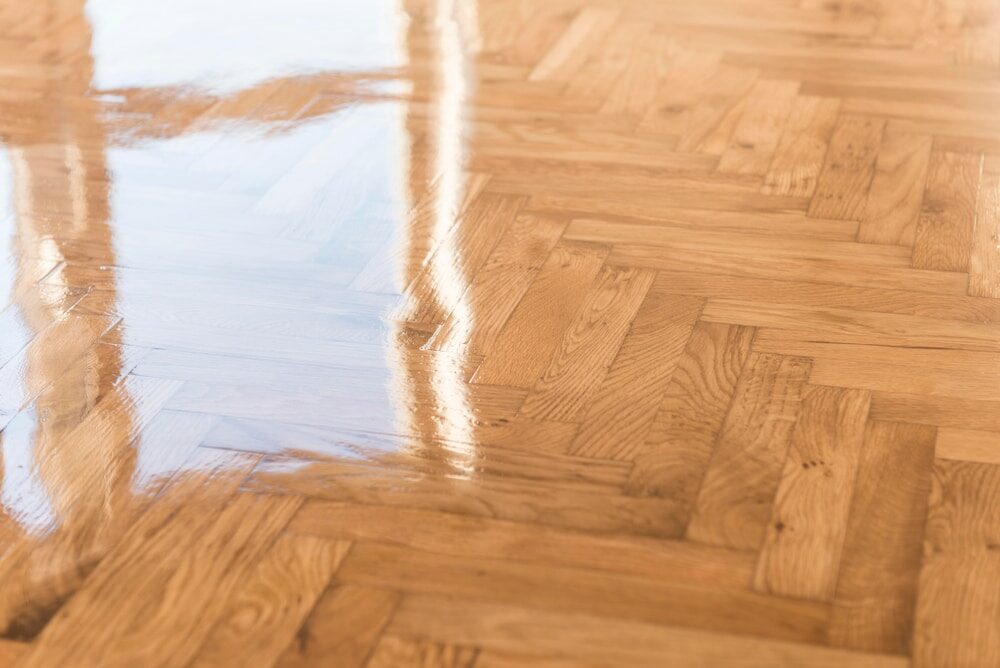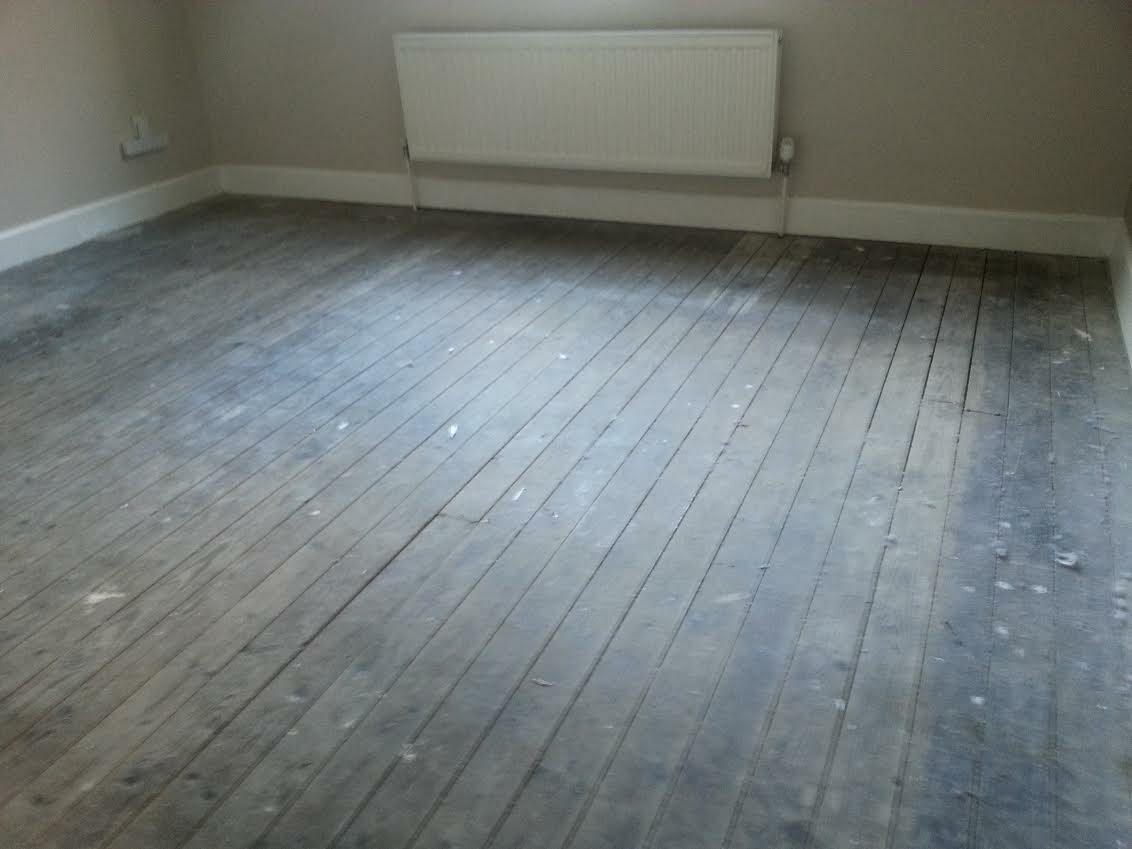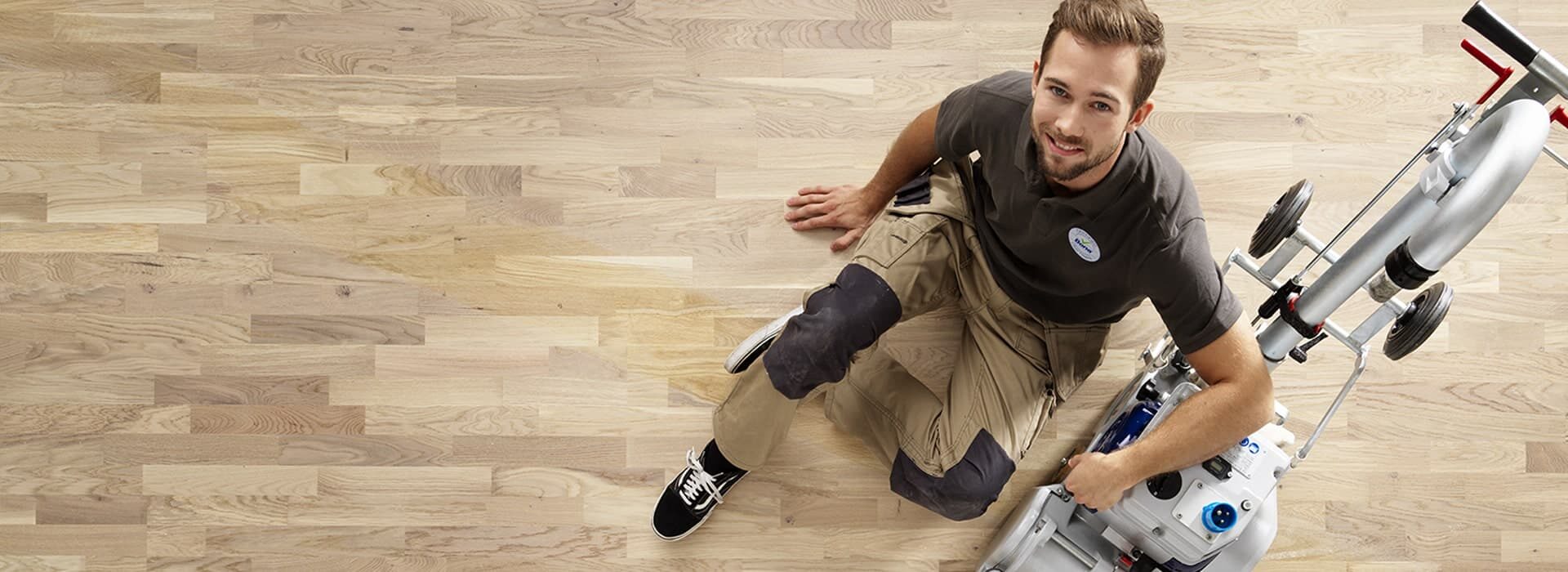London:
Nationwide:
Navigating the Maze: Understanding the Differences Between Solid and Engineered Wood Floors in Britain
Posted on April 19, 2024
Wood Flooring
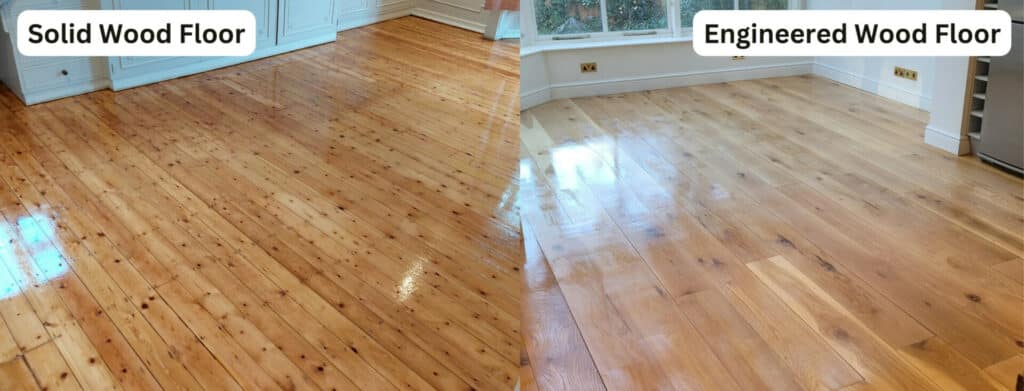
Understanding Solid vs. Engineered Wood Flooring in Britain
Welcome to “Navigating the Maze: Understanding the Differences Between Solid and Engineered Wood Floors in Britain.” Choosing the right wood flooring for your home or business is a decision that combines aesthetics, functionality, and investment considerations. In Britain, where style meets tradition, the choice between solid wood and engineered wood floors is not just about picking a material but also about understanding the nuances that each type offers to suit different environments and uses. In this blog post, we will delve into what makes solid wood and engineered wood distinct and appealing in their own rights. We’ll explore the fundamental differences in their construction, discuss their respective benefits and limitations, and offer insights into which might be more suitable for your specific needs. Whether you are renovating an old Victorian home or fitting out a modern office space, understanding these options will help you make an informed decision that aligns with your aesthetics, practical requirements, and budget. Join us as we break down the characteristics of these popular flooring choices, analyse their performance under various conditions, and provide you with the necessary knowledge to navigate the flooring market confidently. By the end of this post, you should have a clear picture of why choosing the right type of wood flooring is crucial and how it can impact the look, feel, and longevity of your space.
What is solid wood flooring?
Solid wood flooring, as the name suggests, is made from single pieces of hardwood and is one of the most traditional and popular types of flooring used across Britain. Each board of solid wood flooring is typically cut from a single piece of timber, usually hardwood like oak, ash, or walnut, which is known for its strength and durability. This type of flooring offers a timeless appeal due to its natural patterns, rich textures, and unique character that develops with age.
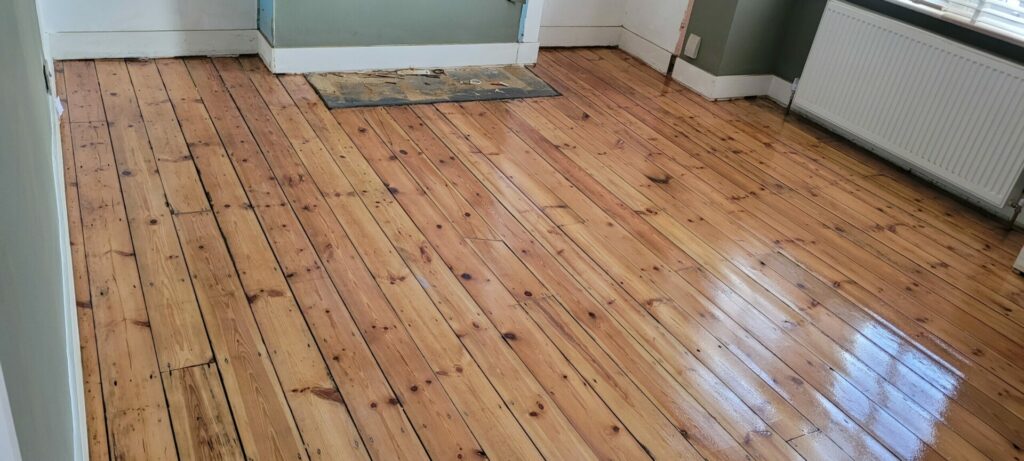
Definition and Characteristics
Solid wood flooring boards are typically 18–20 mm thick and can come in various widths and lengths. This allows for a range of installation patterns, from classic straight planks to intricate parquet styles, offering flexibility in design according to personal taste or architectural requirements. The thickness of the boards also means they can be sanded down and refinished multiple times over the years, potentially extending the floor’s lifespan significantly.
Common types of solid wood used in Britain
- Oak is highly popular due to its hardness, attractive grain, and durability. Oak is versatile and can complement both traditional and modern interiors.
- Walnut is known for its rich, dark tones and striking grain patterns. Walnut is less hard than oak but offers a luxurious look.
- Maple offers a lighter colour palette with a fine, consistent grain, making it ideal for contemporary spaces that desire a bright and airy feel.
- Ash: Provides excellent toughness and shock resistance; lighter in colour than oak but with similar durability.
- Cherry: Cherished for its reddish hue and smooth grain, cherry wood darkens beautifully with age but is softer than other hardwoods.
Solid wood flooring’s appeal largely stems from its authenticity and longevity. It can add substantial value to a property because of its quality and the warm, inviting environment it creates. In British homes, where the weather can often be damp and changeable, solid wood floors stand up well to wear and tear, assuming proper maintenance is performed. However, they are susceptible to warping and expanding when exposed to moisture and fluctuations in temperature, thus requiring careful consideration regarding where they are installed. Understanding these characteristics will help you appreciate the durability and beauty solid wood flooring can bring to a space, making it a worthwhile investment for those looking to enhance their home with a touch of natural elegance.
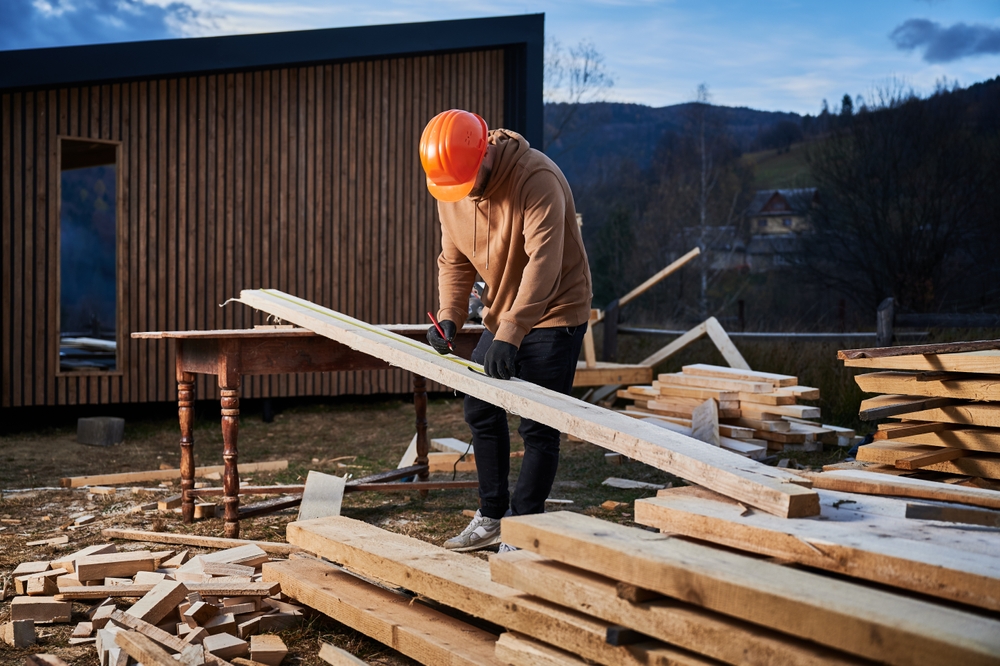
What is engineered wood flooring?
Engineered wood flooring represents a modern solution to many of the challenges posed by natural wood floors. It offers the beauty of hardwood combined with enhanced stability and resistance to environmental changes, making it a popular choice in Britain’s diverse climates and home styles.
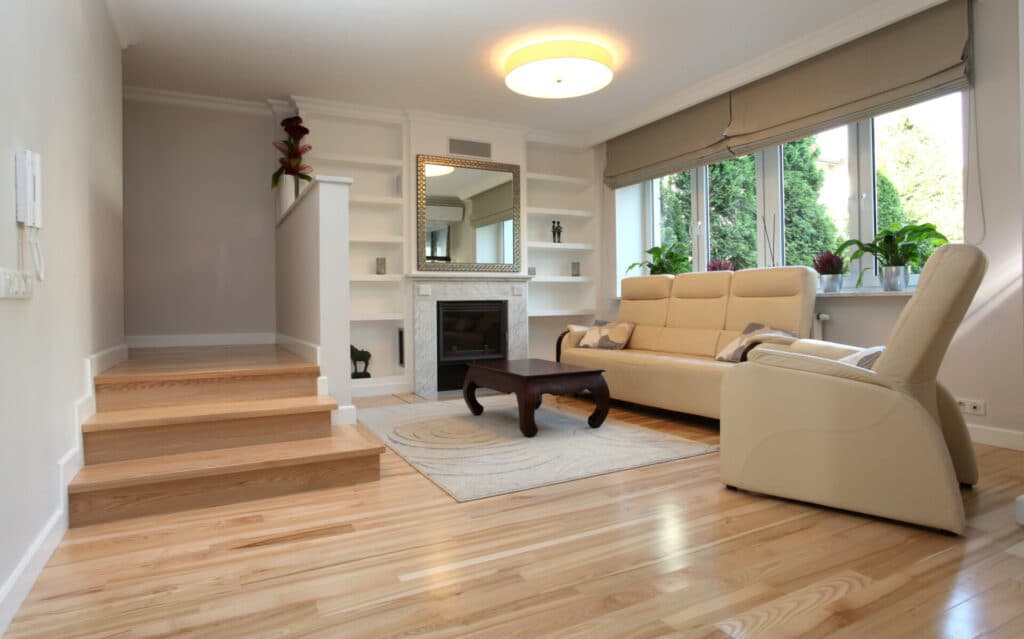
Composition and Construction
Engineered wood flooring consists of multiple layers. The top layer, or veneer, is a thin slice of real hardwood, which provides the authentic look and feel of traditional solid wood. This veneer is supported by several layers of other wood-based materials, such as plywood, compressed fibres, or recycled wood products, arranged in a cross-grain configuration. This structure helps to counteract the natural tendency of wood to expand and contract with changes in temperature and humidity. Typically, engineered wood floors can range from 14mm to 20mm in thickness, with the top hardwood layer being anywhere from 3mm to 6mm. This design allows engineered floors to be sanded down and refinished, although generally not as many times as solid wood can.
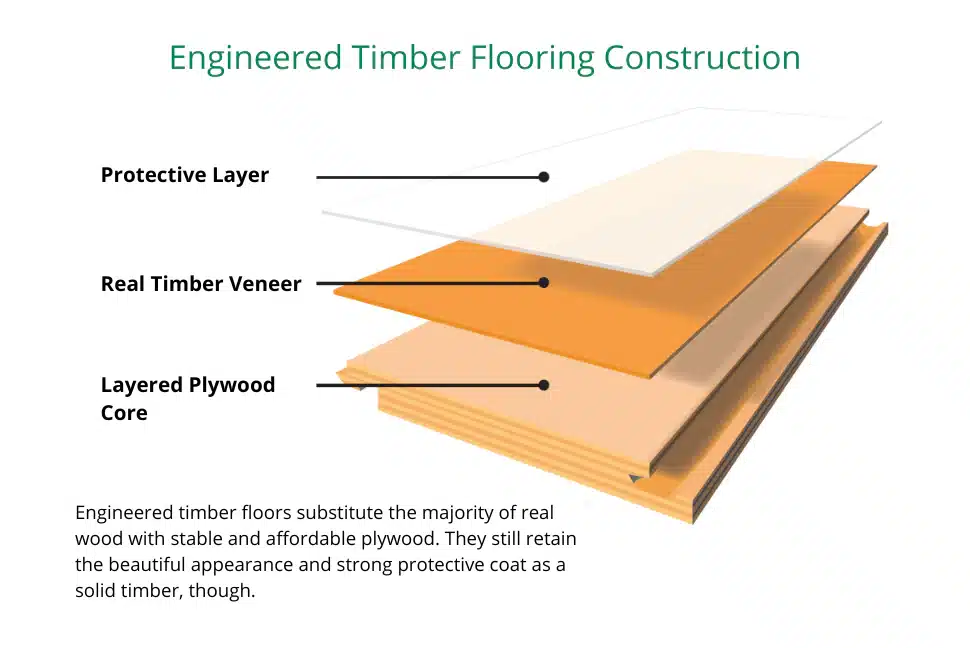
Advantages of Engineered Wood over Solid Wood
- Stability: The multi-layered structure of engineered wood makes it more stable than solid wood. It is less likely to bow, warp, or react dramatically to changes in humidity.
- Versatility: Engineered wood can be installed over almost any type of subfloor, including concrete or existing flooring. It is also suitable for use with underfloor heating systems, which are increasingly popular in modern British homes.
- Ease of Installation: Engineered wood often comes with interlocking tongues and grooves that make installation quicker and easier than traditional solid wood flooring. It can be laid down as a “floating” floor, meaning it doesn’t need to be nailed or glued down.
- Cost-effectiveness: While still providing the look and feel of solid wood, engineered floors often come at a lower cost, both for the material itself and the installation.
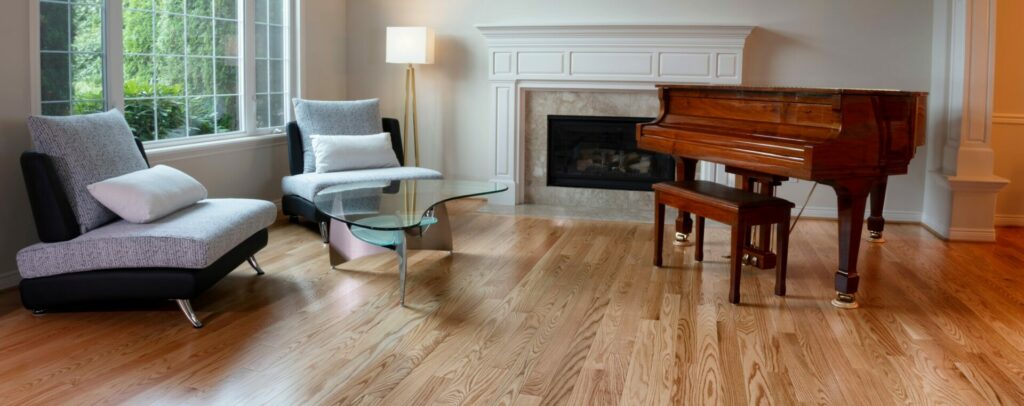
Comparative Analysis: Solid vs. Engineered Wood Flooring
When deciding between solid and engineered wood flooring, homeowners in Britain are faced with several factors to consider, from durability and aesthetic appeal to installation requirements and cost. This section provides a detailed comparative analysis to help clarify the pros and cons of each type, ensuring you make the best choice for your specific needs.
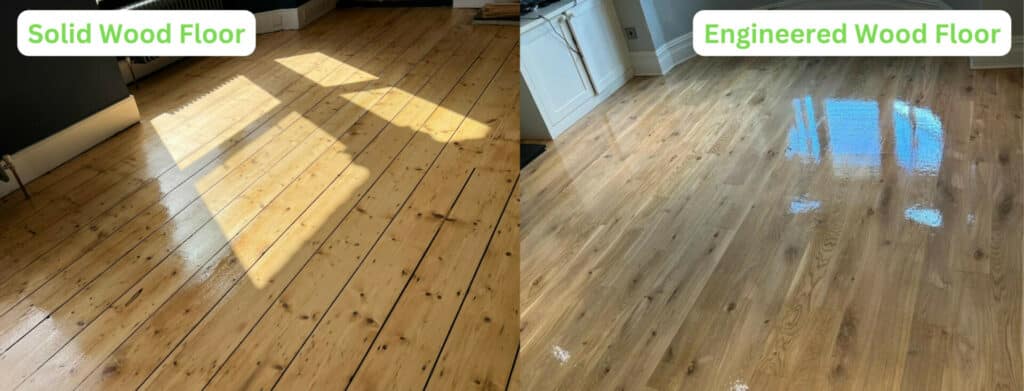
1. Durability and longevity
Solid wood flooring:
- Pros: It can last for decades if maintained properly. It can be sanded and refinished multiple times throughout its life.
- Cons: Prone to warping and expanding in humid conditions or when exposed to water.
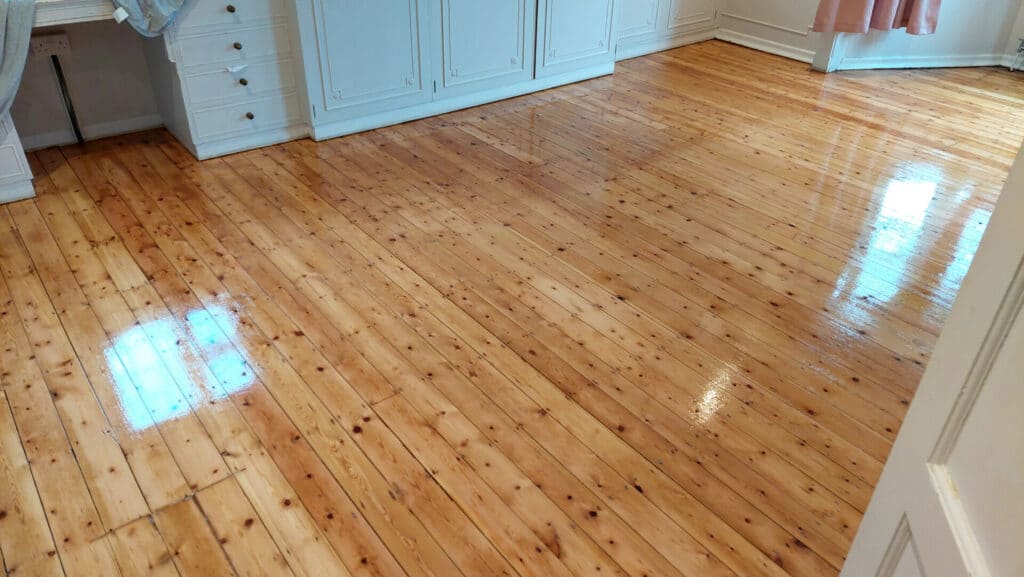
Engineered Wood Flooring:
- Pros: It is more stable than solid wood in varying climate conditions due to its multi-layered construction.
- Cons: It typically has a shorter lifespan than solid wood because it can only be sanded and refinished a limited number of times, depending on the thickness of the top layer.

2. Moisture and heat resistance
Solid wood flooring:
- Pros: High-quality solid wood can withstand heat well when properly treated.
- Cons: poor resistance to moisture; prone to damage in damp areas or where spills are likely.
Engineered Wood Flooring:
- Pros: Better suited for environments with fluctuating moisture levels or with underfloor heating systems due to its dimensional stability.
- Cons: The top veneer layer can still be damaged by excessive moisture if not properly sealed.
3. Aesthetic and stylistic considerations
Solid wood flooring:
- Pros: It offers a classic and upscale look with a wide variety of wood types. The wood’s natural ageing can add character over time.
- Cons: limited by the natural wood’s characteristics; certain rare or exotic woods can be expensive.
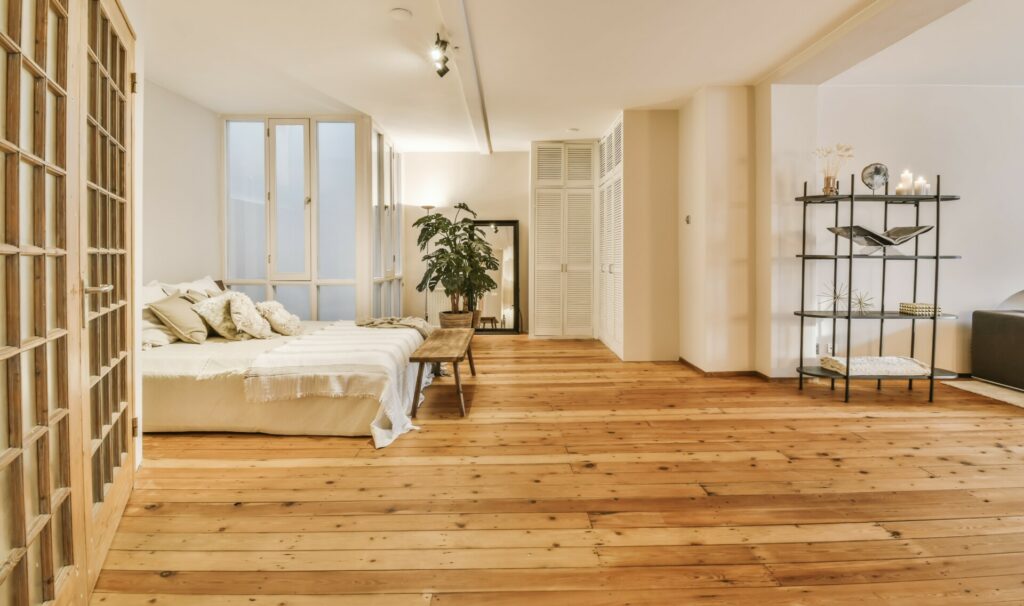
Engineered Wood Flooring:
- Pros: Provides a similar aesthetic to solid wood with additional options for finishes and stains that may not be possible with solid wood.
- Cons: The repeating patterns in the veneer can be noticeable, which might detract from the natural look for some homeowners.

4. Installation Considerations
Solid wood flooring:
- Pros: Traditional installation methods bond the floor securely to the subfloor.
- Cons: Installation generally requires professional expertise, making it more expensive and time-consuming.
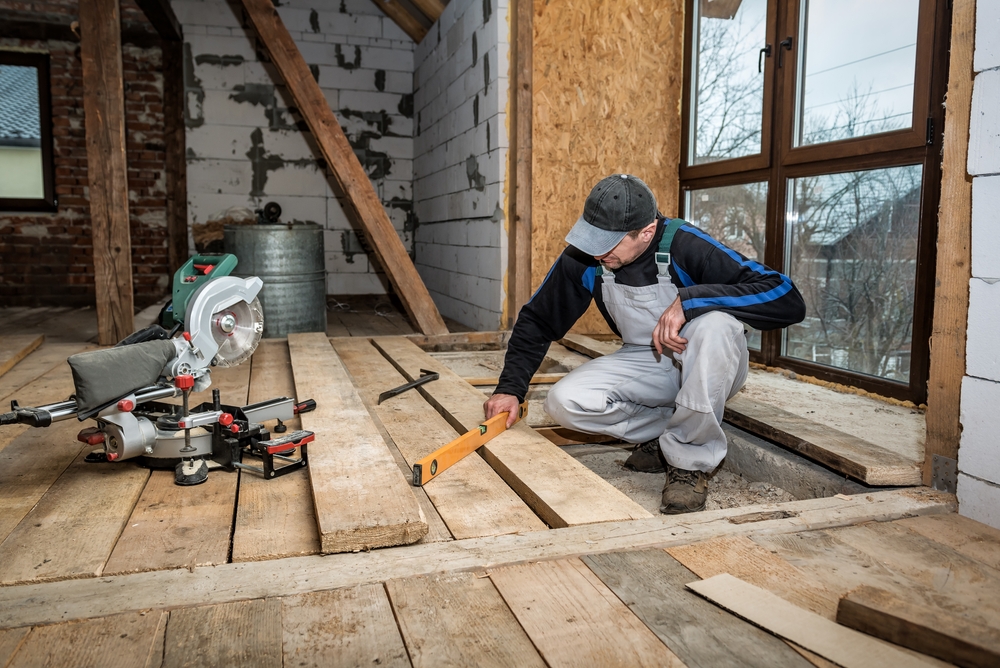
Engineered Wood Flooring:
- Pros: Easier and quicker to install, often suitable for DIY projects due to the click-and-lock installation systems. Can be installed over most existing floors.
- Cons: May incur additional costs if subfloor preparation is needed to accommodate the floating floor setup.
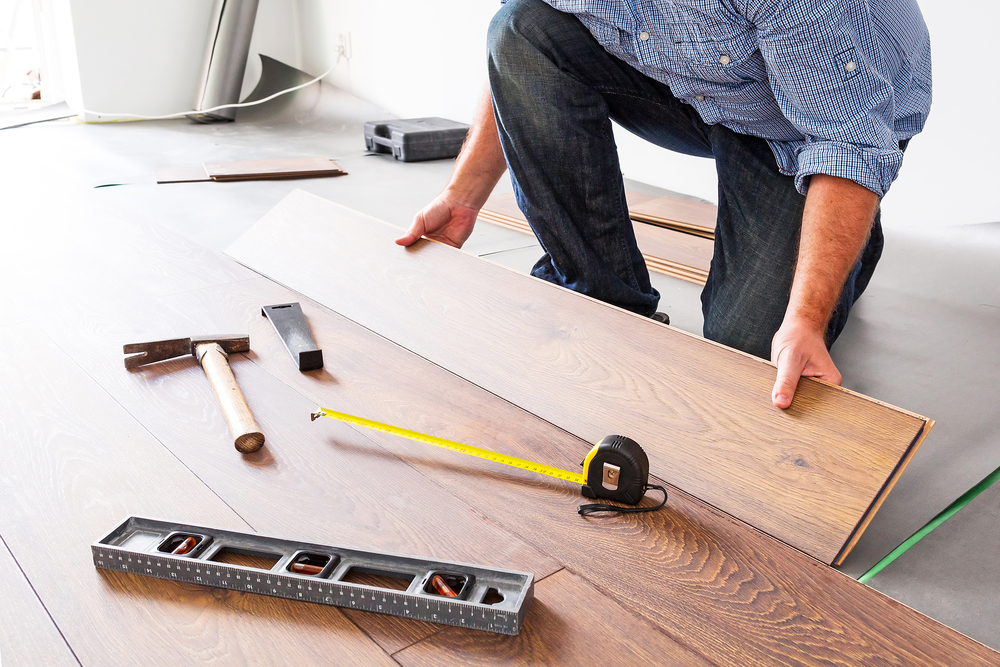
5. Cost Analysis
Solid wood flooring:
- Pros: It adds more value to a property and is considered a premium flooring option.
- Cons: higher upfront costs for both materials and installation.

Engineered Wood Flooring:
- Pros: generally more cost-effective than solid wood. Offers a good balance of cost and appearance.
- Cons: May not add as much value to a property as solid wood in the long term.

Installation Considerations
Choosing between solid and engineered wood flooring involves more than just aesthetics and durability; the installation process itself can significantly influence your decision. Each type of wood flooring comes with its own set of requirements and challenges that can impact the overall costs, timeline, and even the feasibility of a DIY project. Below, we explore the key installation considerations for both solid and engineered wood floors in Britain.
1. Preparation and Tools Required
Solid wood flooring:
- Preparation: The subfloor must be clean, dry, and level. Any discrepancies in level must be addressed before installation to avoid future issues with warping or squeaking.
- Tools: Commonly required tools include a circular saw or mitre saw, a hammer or pneumatic nailer, a tape measure, and a carpenter’s square. For finishing, sanding machines and sealants are necessary.
- Skills: Installation of solid wood flooring typically demands a higher skill level, especially in ensuring the planks are securely fixed and aligned.
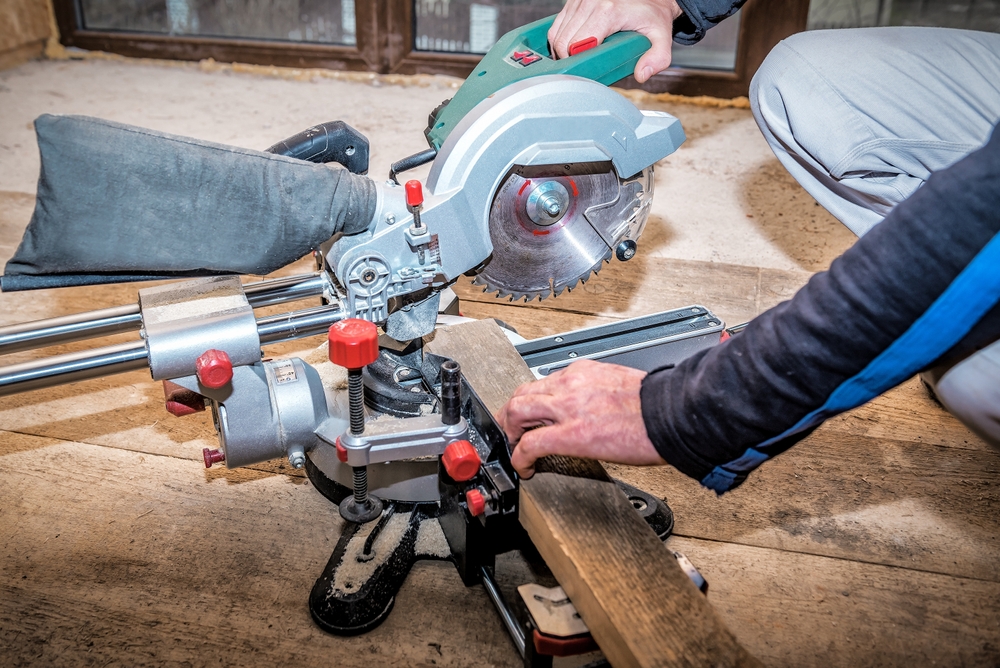
Engineered Wood Flooring:
- Preparation: Similar to solid wood, the subfloor needs to be clean and level, but engineered wood is more forgiving of minor imperfections due to its structural stability.
- Tools: Depending on the installation method (floating, glueing, or nailing), tools might include a saw for cutting to size, a tapping block, and a pull bar for floating floors.
- Skills: Engineered floors often feature click-and-lock systems that simplify installation, making them more accessible for DIY enthusiasts.
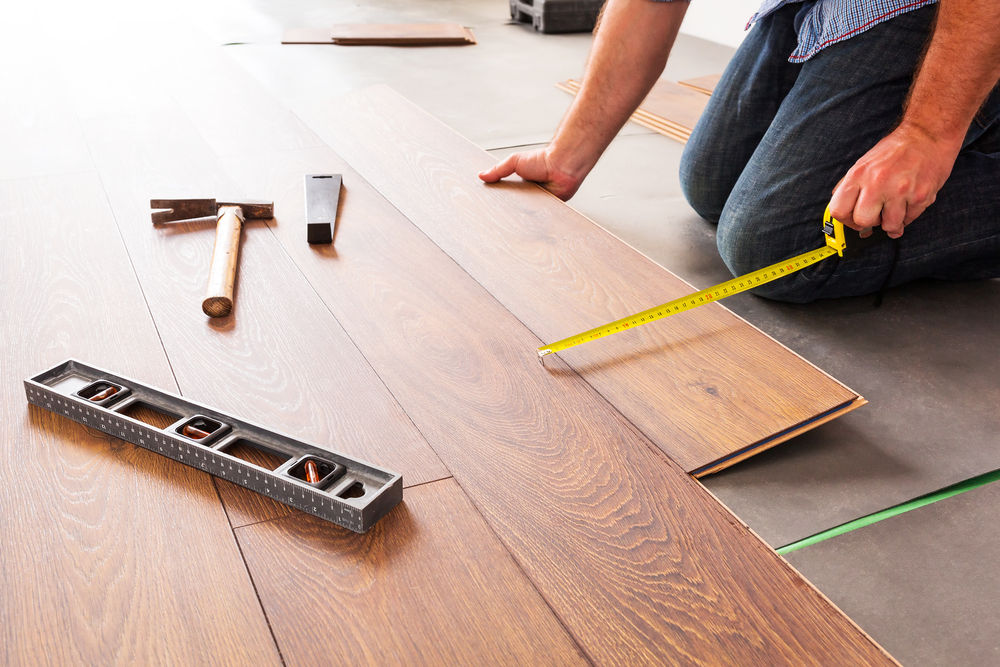
2. Step-by-Step Guide to Installation
Solid wood flooring:
- Acclimatise the Wood: Store the wood in the room where it will be installed for at least a few days to acclimatise to the environment.
- Prepare the Subfloor: Ensure the subfloor is level and free of moisture.
- Lay the First Row: Start from the wall, leaving a gap for expansion, and secure the planks with nails or staples.
- Continue the installation: Fit each plank snugly against the last, maintaining a staggered pattern to avoid alignment of the ends.
- Final Row and Finish: Cut planks to fit the final row. Sand if necessary, and apply a finish or sealant.
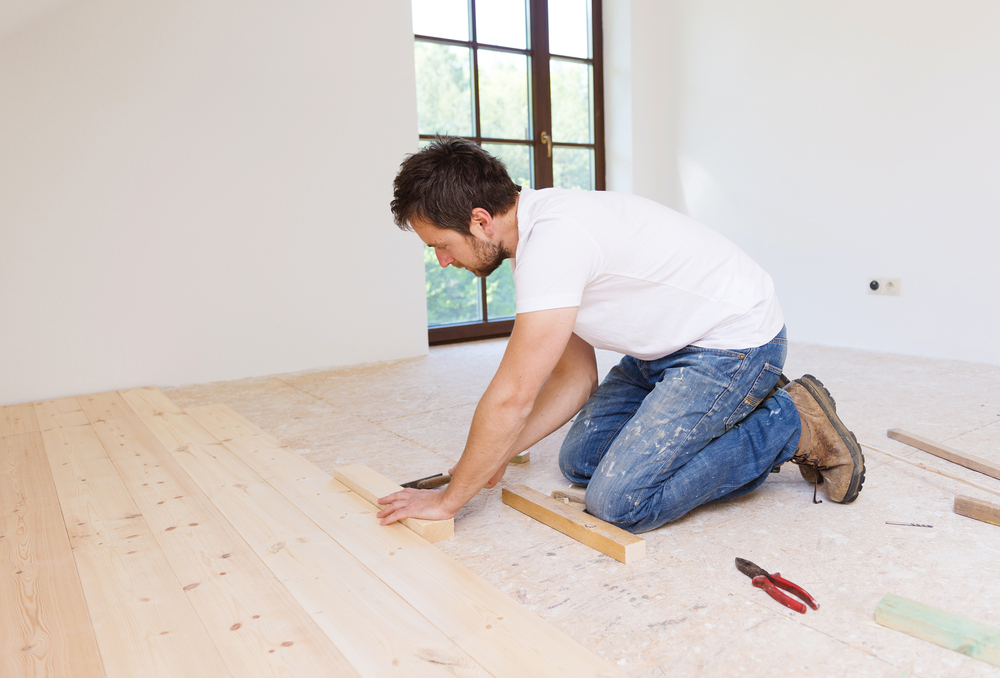
Engineered Wood Flooring:
- Prepare the Subfloor: As with solid wood, the subfloor must be clean and level.
- Lay the Underlayment: Roll out the underlayment (if required) to provide a moisture barrier and help with sound insulation.
- Install the First Row: Begin at one corner, using the interlocking edges to connect the planks, possibly adding glue if not using a floating method.
- Complete the installation. Continue laying the planks, cutting as necessary to fit the room.
- Finishing Touches: No sanding is required; just ensure all planks are securely connected and add transition strips at doorways or between different flooring types.
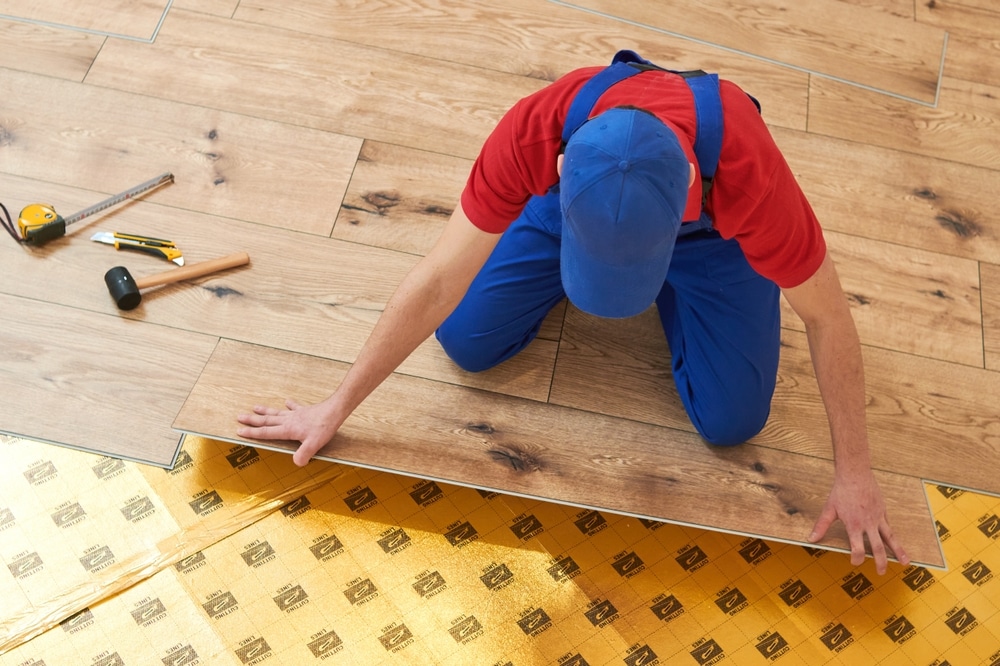
Maintenance and care
Proper maintenance and care are essential for prolonging the life of any wood flooring, whether solid or engineered. Each type requires specific strategies to keep it looking its best and functioning well over time. Here’s how you can maintain and care for your solid and engineered wood floors in Britain, taking into consideration the typical climate and household activities.

1. Daily and Long-Term Maintenance Tips
Solid wood flooring:
- Daily Maintenance: Sweep or vacuum regularly to remove dirt and grit that can scratch the surface. Use a soft-bristle broom or a vacuum with a soft floor attachment.
- Weekly Cleaning: Clean the floor using a damp mop and a wood cleaner formulated for solid wood. Avoid excessive water, as it can seep between the planks and cause damage.
- Preventive Measures: Place felt pads under furniture legs to prevent scratches. Use doormats at entrances to minimize the dirt brought in on shoes.
- Deep Cleaning and Refinishing: Every few years, depending on the traffic and wear, solid wood floors may need to be sanded down and refinished to restore their original luster and remove deep scratches or stains.
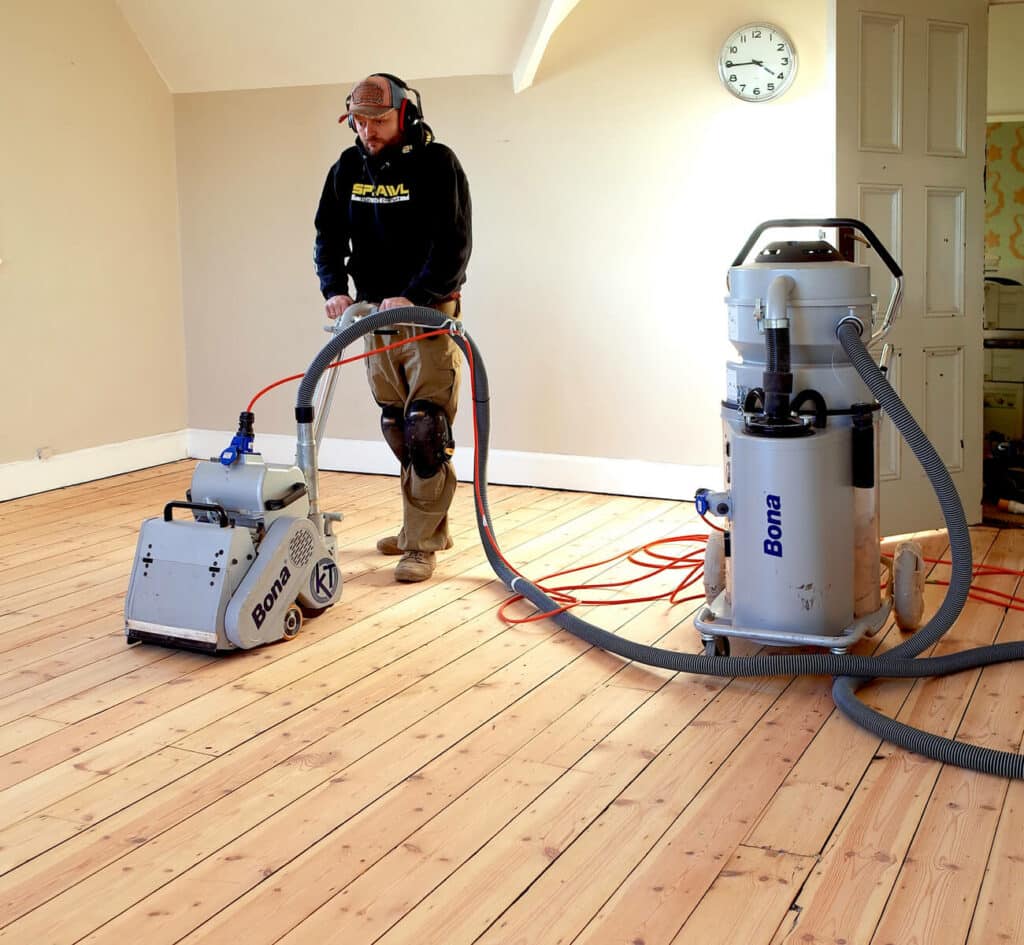
Engineered Wood Flooring:
- Daily Maintenance: Like solid wood, sweep or vacuum to keep the floor free of debris. Be particularly gentle to avoid scratching the veneer top layer.
- Weekly Cleaning: Use a slightly damp mop with a suitable cleaner designed for engineered wood. Avoid steam mops, which can damage the layers of the flooring.
- Preventive Measures: Rugs and runners in high-traffic areas can protect the floor from wear and tear. Ensure any spills are wiped up immediately to prevent water damage.
- Deep Cleaning: Engineered wood should not be sanded as frequently as solid wood. Only floors with thicker top layers can be refinished, and even then, it should be done sparingly.
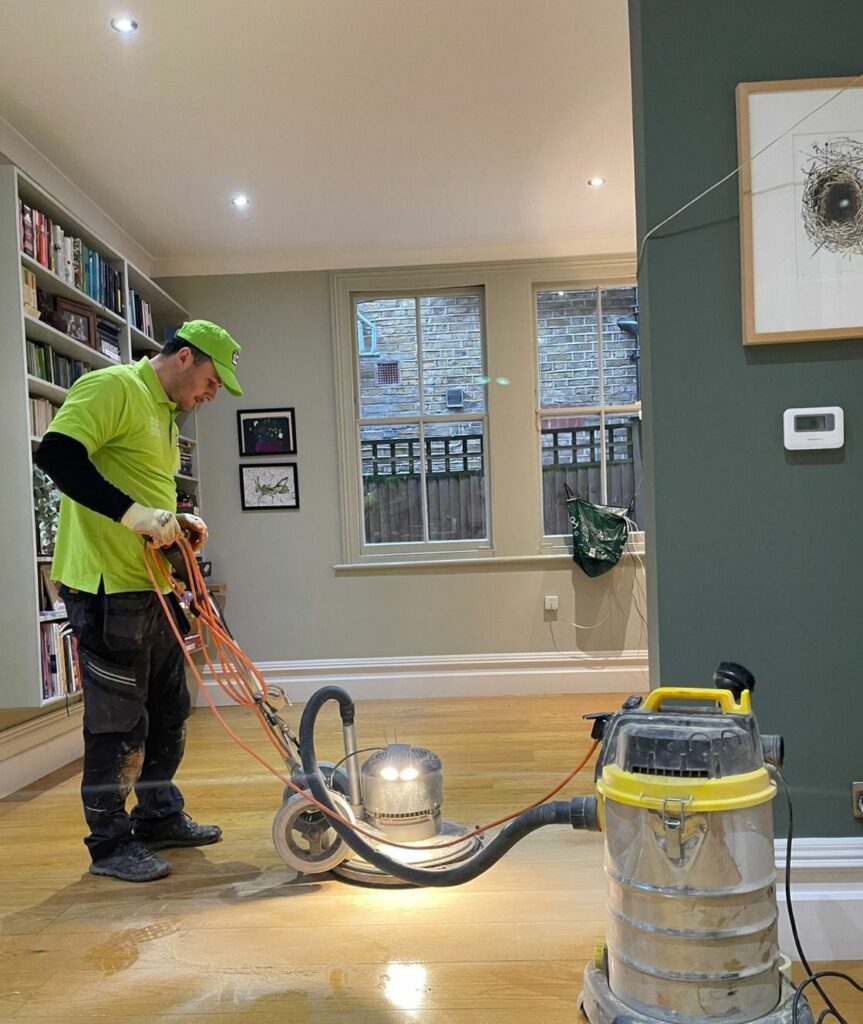
2. Repair and replacement strategies
Solid wood flooring:
- Minor Repairs: Small scratches and dents can often be repaired with wood putty or a color-matched wood marker.
- Plank Replacement: Severely damaged planks can be replaced. This process involves cutting out the damaged piece and carefully fitting a new plank, which might need custom staining to match the existing floor.
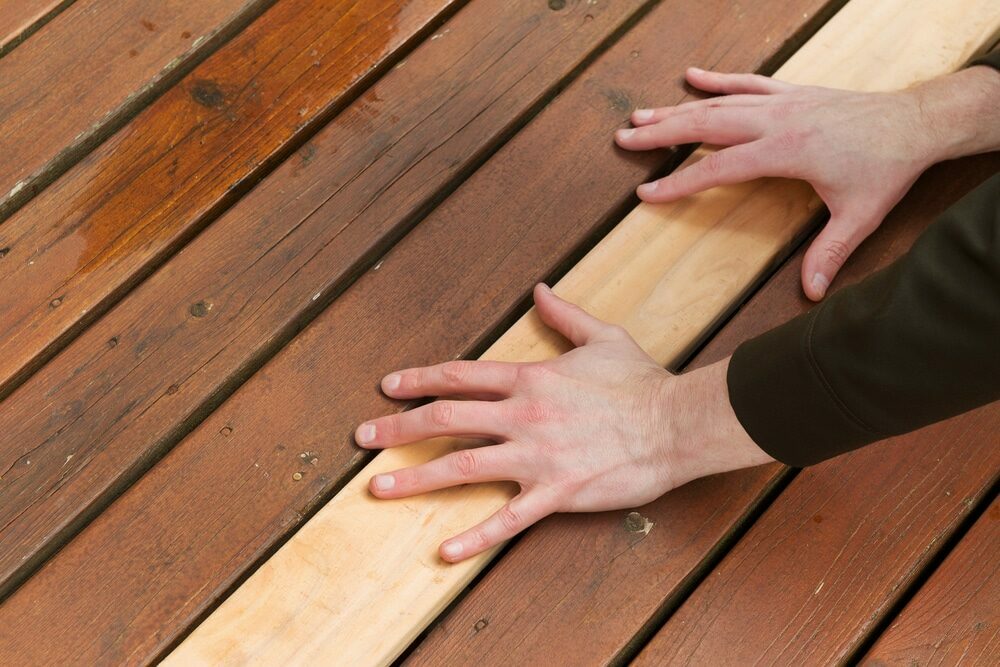
Engineered Wood Flooring:
- Minor Repairs: For superficial scratches, use a repair kit specifically designed for engineered wood. These kits often include fillers and finish pens.
- Plank Replacement: Similar to solid wood, damaged engineered planks can be replaced. This is a bit easier if the floor is installed using a floating method, as the interlocking planks can be disassembled and reassembled with relative ease.
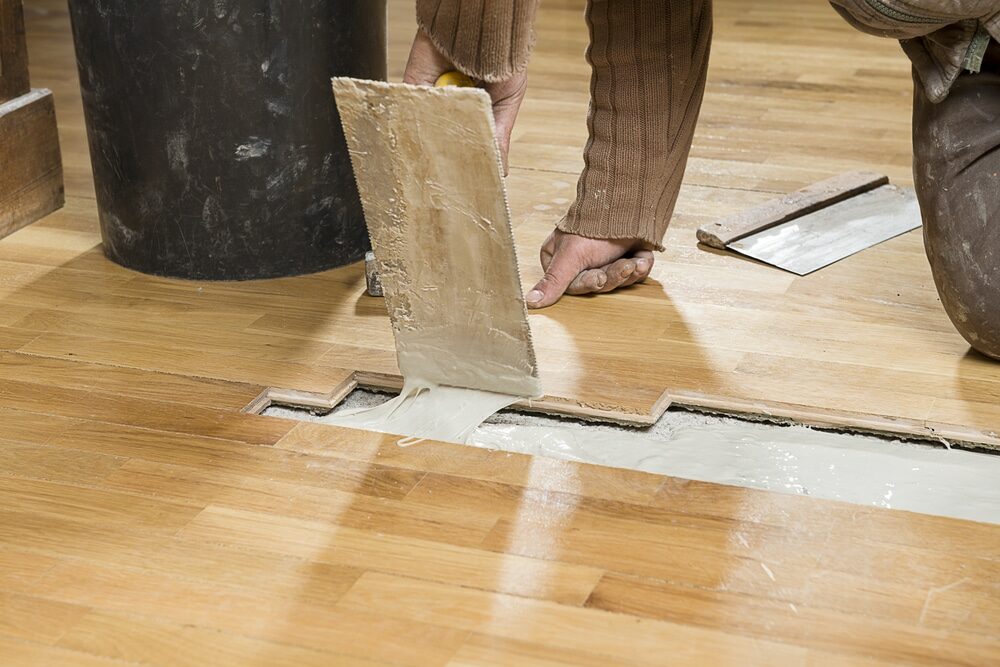
Maintaining your wood flooring with regular care and immediate attention to spills and damages not only keeps it looking beautiful but also extends its life, enhancing the overall value and comfort of your home. Whether you choose solid or engineered wood, understanding these maintenance fundamentals will help ensure your floors remain a highlight of your property for many years to come.
Cost Analysis: Solid vs. Engineered Wood Flooring
When considering wood flooring, the cost is a significant factor for many homeowners in Britain. It’s important to not only think about the initial purchase and installation costs but also the long-term value and potential maintenance expenses. Here’s a detailed cost analysis comparing solid and engineered wood flooring, helping you make a financially informed decision.
1. Initial Costs and Long-Term Value
Solid wood flooring:
- Purchase Cost: Generally, solid wood flooring is more expensive than engineered wood because it is made from complete, solid logs. Prices vary widely depending on the type of wood, with exotic species being the most costly.
- Installation Cost: higher than engineered wood due to the complexity of installation. It usually needs to be nailed or glued down, which requires professional installation.
- Long-Term Value: Solid wood floors can significantly increase a home’s resale value. They are highly sought after for their longevity and the ability to be refinished multiple times, which can extend their life for decades.

Engineered Wood Flooring:
- Purchase Cost: Typically less expensive than solid wood. The cost depends on the thickness of the top veneer layer and the quality of the base layers.
- Installation Cost: generally lower than solid wood. Engineered wood can often be installed as a floating floor, which is less labor-intensive and can sometimes be done as a DIY project.
- Long-Term Value: While engineered wood does improve home value, it may not carry the same prestige as solid wood. However, its stability in various climates and under different conditions can be a selling point.

2. Factors Affecting Price in the UK Market
- Type of Wood: Rarer and more desirable wood types (like European oak) are more expensive than more common or domestically sourced woods.
- Finish and Thickness: Higher-quality finishes and thicker veneer layers or overall plank thickness can increase the price of engineered wood.
- Underfloor Heating Compatibility: Engineered wood that is compatible with underfloor heating systems might come at a premium but can be a worthwhile investment in colder regions.
- Installation Requirements: The condition of the existing floor or subfloor can affect installation costs. Preparing an uneven subfloor or removing an old floor can add to the overall cost.
- Geographical Factors: Prices can also vary regionally based on the cost of living and the availability of certain wood types.
3. DIY vs. Professional Installation Costs
- DIY Installation: Reduces costs significantly. Engineered wood is more commonly installed DIY due to the ease of fitting interlocking planks.
- Professional Installation: While more expensive, professional installation ensures that the job is done right, which can be particularly important for solid wood floors to prevent future issues such as buckling or gaps.
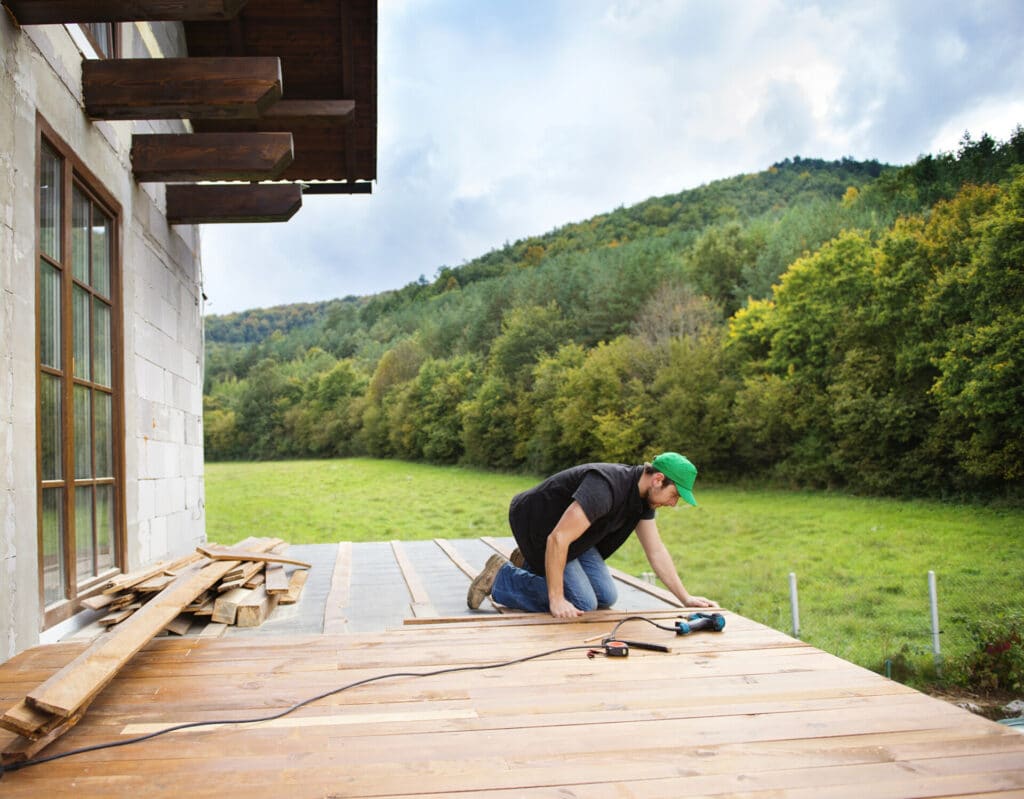
4. Maintenance and repair costs
- Solid Wood Flooring: The need for periodic sanding and refinishing can add to the long-term maintenance cost but also prolong the floor’s life.
- Engineered wood flooring is less likely to require the same level of maintenance. However, because it can only be sanded down a few times, it might need to be replaced sooner than solid wood.
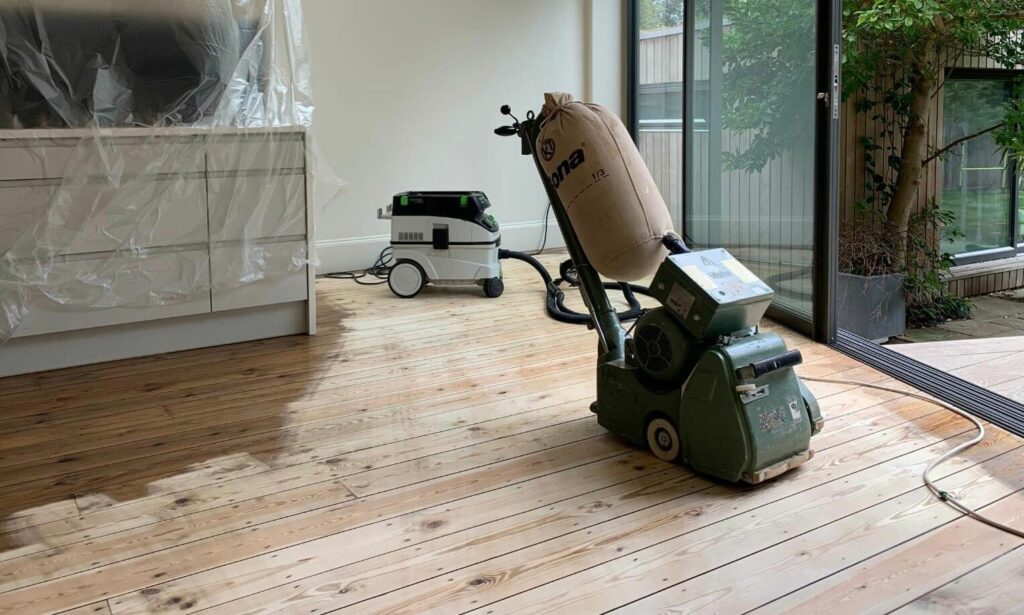
Conclusion
Navigating the choice between solid and engineered wood flooring involves a comprehensive understanding of their respective benefits, limitations, and impacts. In this blog post, we’ve explored various aspects of these popular flooring options in Britain, from their inherent characteristics and aesthetic appeal to their installation requirements, maintenance needs, cost implications, and environmental impact.
- Solid wood flooring offers timeless beauty and the potential for longevity that can span generations. Its ability to be refinished multiple times allows for a renewal of its surface, making it a significant long-term investment. However, it requires careful consideration regarding its susceptibility to moisture and the need for professional installation.
- Engineered wood flooring, on the other hand, provides a versatile and stable alternative that copes well with varying climatic conditions. Its ease of installation and lower initial cost make it accessible for a wider range of projects, including those suitable for DIY enthusiasts. While it may not have the same lifespan as solid wood, its construction makes efficient use of resources and offers a sustainable choice for environmentally conscious consumers.
When making your decision, consider the specific needs of your home environment, your budget, and your long-term living situation. For homes in areas with fluctuating humidity, engineered wood might be the best choice. For those looking to add lasting value to a family home, solid wood could be the preferable option. Ultimately, both solid and engineered wood floors have their place in British homes, each offering distinct advantages. By weighing these factors carefully, homeowners can select a flooring option that not only enhances the beauty and comfort of their home but also aligns with their practical requirements and ethical considerations. Remember, the best choice is one that meets your specific needs, enriches your living space, and feels right for your lifestyle.

Sanding
We provide virtually dust-free sanding with our continuous belt machinery with mobile extraction units, giving you a safer environment for your family.
Oiling
This organic finish not only adds beauty to your home but also has exceptional water-repellent characteristics, making it easier to clean and maintain.
Waxing
This natural floor finish offers the softest and most mellow appearance – and leaves your floor able to breath.
Buffing
Using soft buffing machines (and hand-polishing where required) will bring a wonderful sheen to your newly-finished floor.
Repairs
We offer a full assessment of your wooden floors to determine what repairs are needed to provide the perfect working surface for the later stages of sanding, staining and sealing.
Restoration
We offer a comprehensive restoration process designed to address floors that are improperly fitted or damaged over time through wear and tear.
Request a fixed price quote for your wood floor restoration now
Simply enter your postcode below to get started.
Services
Wood Floor Sanding Wood Floor Restoration Wood Floor Scratch Repair Squeaky Wood Floor Repair Parquet Floor Sanding Parquet Floor Restoration Commercial Floor Sanding Church Floor Sanding Community Centre Floor Sanding School Floor Sanding Gap Filling Gap Filling with ResinCopyright © Mr Sander®
Privacy & Cookies Terms & Conditions Complaints Procedure Cancellation Rights Sitemap